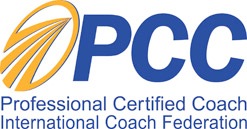The Brain
“Here We Go Again”…OR…”I Get To Go Again!!!” A Leadership Choice.
“Here we go again”…OR…”I get to go again!!!” Which one feels better? I received the “here we go again” from a client as a reaction to my wishing them a great 2014. It got me thinking about how our initial reaction offers us an opportunity to examine the expectations and assumptions we hold about our future day, week, year, meeting, etc… Without realizing it, expectations and assumptions are running in the background. They have an effect on how we feel right now and how we approach what is next – 2014 in this case. If unexamined and not challenged when they fail to create positive anticipation, we risk not bringing our best selves or AdultLeader to our future. An eye roll or a grimace usually accompanies “here we go again” and indicates that we’re not really looking forward to what is next. We are letting the inertia of previous experience create or reinforce expectations and assumptions about our future. This may be exacerbated by our brain’s tendency to focus more on the negatives, and to forget the positives. According to Dr. Rick Hanson, a neuropsychologist and author of the book Hardwiring Happiness: The New Brain Science of Contentment, Calm, and Confidence, our brains are incentivized toward seeing the negative. I know I would rather approach 2014 and every day, week and meeting with the feeling of “I get to go again!!!” And I don’t always at the first pass. According to Dr. Hanson, deliberately looking for the positive just kind of levels the playing field. A feeling of positive anticipation or excitement helps us bring our best to what is next with an energy and attitude that is more likely to help make our goals and dreams happen. It’s a choice to expect that a positive outcome is possible. When we make this choice, we feel more powerful and in charge. We eliminate the feeling of powerlessness that goes along with the inertia of those unexamined expectations and assumptions. We no longer have to walk around unwittingly thinking we will repeat the past It takes vigilance for me to choose to expect, assume, and think in ways that create excitement and positive anticipation for what’s next. I have to work at it, and it isn’t always easy. It takes practice. We can choose to be mindful of our expectations and assumptions and to create a new vision or narrative for 2014, tomorrow, next week, or our next meeting. As leaders we need to create a narrative that makes sense of the challenges and negatives we face, includes what has worked in the past, anticipates the opportunities before us, and recognizes that the past does not have to repeat itself. We can write and speak a future that inspires, so that we all “can’t wait to go again” with you. What’s your vision or narrative for your 2014? for tomorrow, for next week or for your next meeting? Does it excite and fill you and your people with positive anticipation about what is next? Is it the future you want to create for you? for your organization? Take a moment and send your comments and questions. If you were reminded of something, learned something, or questioned something, taking a moment to write it down will ground your observation and may inspire some future action. WANT TO USE THIS ARTICLE IN YOUR E-ZINE, BLOG, OR WEB SITE? You can, as long as you include this complete statement at the end of the article: © 2014 Stephen Carr Associates, Inc. Stephen Carr is a successful, Boston-based Executive Leadership Coach. He can be found at www.stephencarrexecutivecoach.com AND...
Read MoreFocus On The Positive For Increased Effectiveness
Focusing on the positive is more than just positive thinking, and it is not about avoiding or ignoring the negatives or problems. • It is about strengthening the foundation of the organization by focusing on the successes, wins, strengths, and talents of individuals and teams. • It is about reducing the stress, anxiety, and general organizational unhappiness that limits our human ability to make good decisions, deal with everyday challenges, be creative and innovative, and learn and grow together. • It is about making us all happier and improving employee engagement. • It is a way for leaders to help overcome the natural tendency of the brain to focus on the negative. “According to Dr. Rick Hanson, a neuropsychologist, a member of U.C. Berkeley’s Greater Good Science Center’s advisory board, and author of the book Hardwiring Happiness: The New Brain Science of Contentment, Calm, and Confidence, our brains are naturally wired to focus on the negative, which can make us feel stressed and unhappy even though there are a lot of positive things in our lives.” He says we have “brains that are incentivized toward seeing the negative… so deliberately looking for the positive… just kind of levels the playing field.” (From How to Build a Happier Brain in The Atlantic by Julie Beck). If this is true, then leaders have a responsibility to increase focus on the positive in order to reduce stress, anxiety, and general organizational unhappiness and increase employee engagement. There is a real opportunity if we look at the results of some recent studies on employee engagement: • A recent Towers Watson survey indicated that nearly two–thirds of U.S. employees are not fully engaged in their work and are less productive as a result. • Dale Carnegie and MSW did a study showing that 29% of the workforce is engaged, 45% are not engaged, and 26% are actively disengaged. • According to Gallup, over 23 million U.S. workers are actively disengaged. Focusing on the positive is certainly not the only answer to improving employee engagement. Even if all that happened was to shift your own habits toward a more positive outlook, think of how that might affect your decisions, interactions, communications, and influence. Here are 3 things you can do to focus on the positive and strengthen your team or organization: 1. Provide real acknowledgment to individuals and teams. Do this often, both formally and informally. This is more than just a pat on the back for a job well done. It is a statement that specifically identifies the positive result. Follow this by naming the strengths, qualities, and behaviors that were exhibited, and the resulting impact on the situation, team or organization. 2. Debrief initiatives, projects, and team and organizational results. Do this more formally. Identify what worked and went well, whether or not it was completely successful. • What did we accomplish? • Who was involved? • How well did we work together across the team or organization? • Highlight the strengths, positive qualities, and positive behaviors that were exhibited by the individuals and team(s) involved. • Debrief the processes and communication that worked. You may want to define best practices. • Follow this by debriefing what didn’t work so well and what needs to improve. Be specific. • Define next steps. What will we begin changing or improving right now? What will we aspire to in the future? Who will we aspire to become in the future? 3. Provide context and positive evidence in the face of challenge. Challenge will always be present in organizational life. It can be the next big thing that we haven’t tackled before, or a problem we didn’t anticipate and wish we didn’t have to deal with. You can provide evidence of past successes and exhibited abilities. You can highlight the strengths, talents, and qualities that exist on the team. You can provide a larger context that can reframe the challenge into an opportunity for the organization to become more than it was prior to that challenge. You can inspire. By providing a positive focus, you, as...
Read More







